The 85 Best Things to Do in New England
We’ve filled up a travel bucket list covering 85 of the very best things to do in New England. How many have you seen, done, eaten, or experienced?
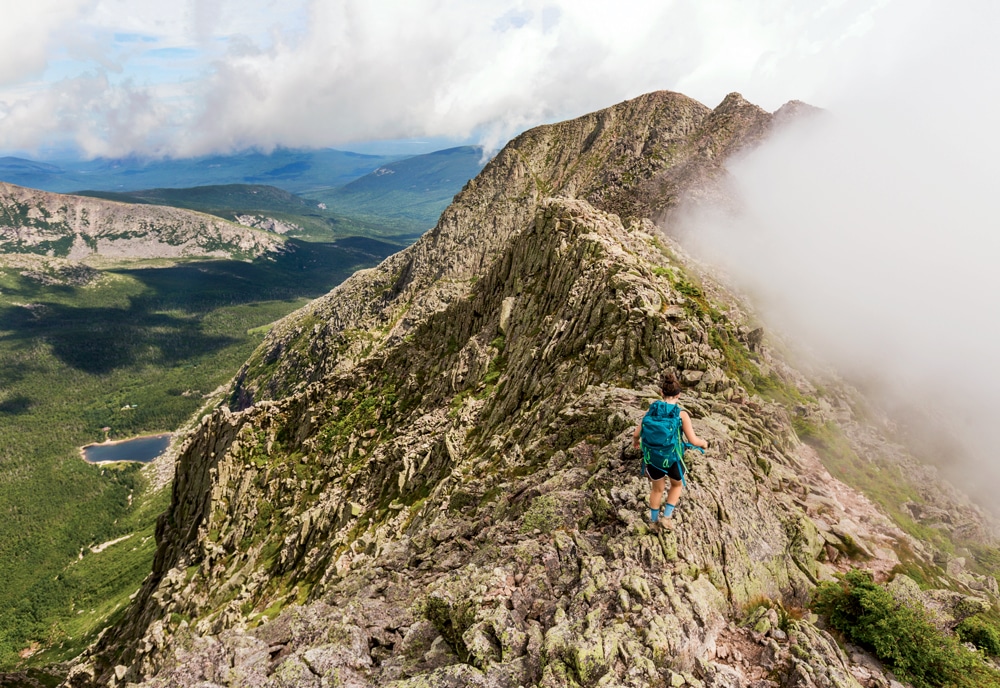
The Knife Edge Trail on Mount Katahdin.
Photo Credit : Jerry Monkman/EcophotographyWhether you’re planning a New England vacation or are a lifelong resident looking to brush up on your regional cred, here are 85 of the very best things to do in New England. How many have you seen, done, eaten, or experienced?
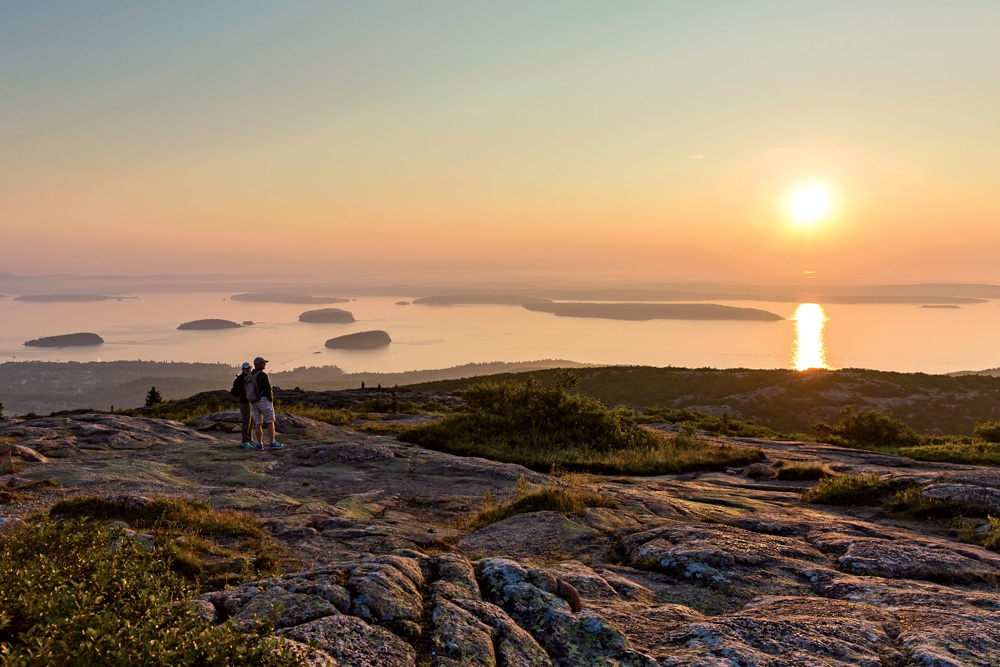
Photo Credit : Carl Tremblay
85 Best Things to Do in New England
1. See the Sunrise at Cadillac Mountain
To see the first rays of sun strike the United States, you can drive to the summit of Cadillac Mountain in Maine, the highest point on the North Atlantic seaboard, or you can climb it in the dark, flashlight in hand. Either way, the rising sun glowing on Frenchman Bay will be even cooler than you imagine.
2. Eat Like a Rhode Islander
From stuffies to clear chowder to cabinets to johnnycakes to pizza strips to Del’s Frozen Lemonade, little Rhode Island is big on local flavor. But why so many signature dishes—is this a culinary Napoleon complex? Chalk it up to two centuries of immigration fueled by the state’s once-thriving industrial economy. As groups mixed and married, their cooking did, too. Luckily for us, though perhaps not our waistlines, the state’s compact geography allows for sampling many of its delicacies in one well-planned afternoon.
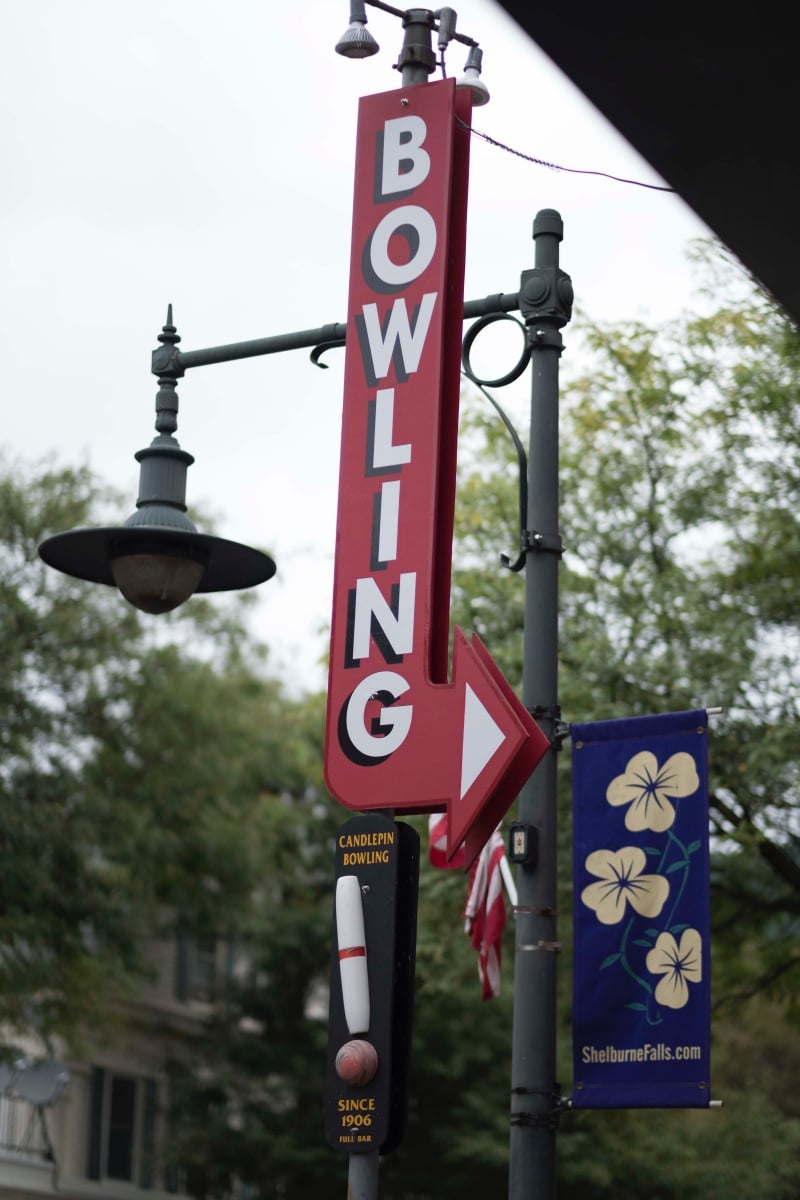
Photo Credit : Heather Marcus
3. Visit a Candlepin Bowling Alley
With its small ball and skinny pins, candlepin bowling—invented in Worcester, Massachusetts, around 1880—fools newcomers into thinking it’s easier than its big-ball cousin. When they roll their first Half Worcester (a regrettable hit that “punches out” just one pin and the one behind it), they learn otherwise. For a maximum throwback vibe, visit the c. 1906 eight-lane alley in Shelburne Falls.
4. Get to the Top of Mount Washington
In 1632 it took Darby Field and two Abenaki guides 18 days from Portsmouth, New Hampshire, to reach the top of Mount Washington, the highest peak in the Northeast. These days the commute is considerably shorter. Five primary hiking trails lead to the top, while the vertiginous auto road offers thrills of its own. And don’t forget the Cog Railway, which still chugs up the second-steepest track in the world after more than 150 years. Regardless of how you get there, the views never fail to amaze.
5. Go on a Whale Watch
It’s been 45 years since a Provincetown, Massachusetts, boat captain named Al Avellar first took a group of school kids out to look for whales—a trip that would lay the foundation for both his new venture, Dolphin Fleet, and for East Coast whale-watching as a big tourism to-do. Today whale-watch cruises depart from every New England state except Vermont and Connecticut, with most steaming out to either Stellwagen Bank (MA) or Jeffreys Ledge (ME), feeding grounds that from mid-spring to mid-autumn see a parade of hungry behemoths including humpbacks, minkes, and the mighty finbacks, which can weigh up to 70 tons and measure as long as two schoolbuses parked end to end.
See More: Best Maine Whale-Watches and Boston Whale Watches
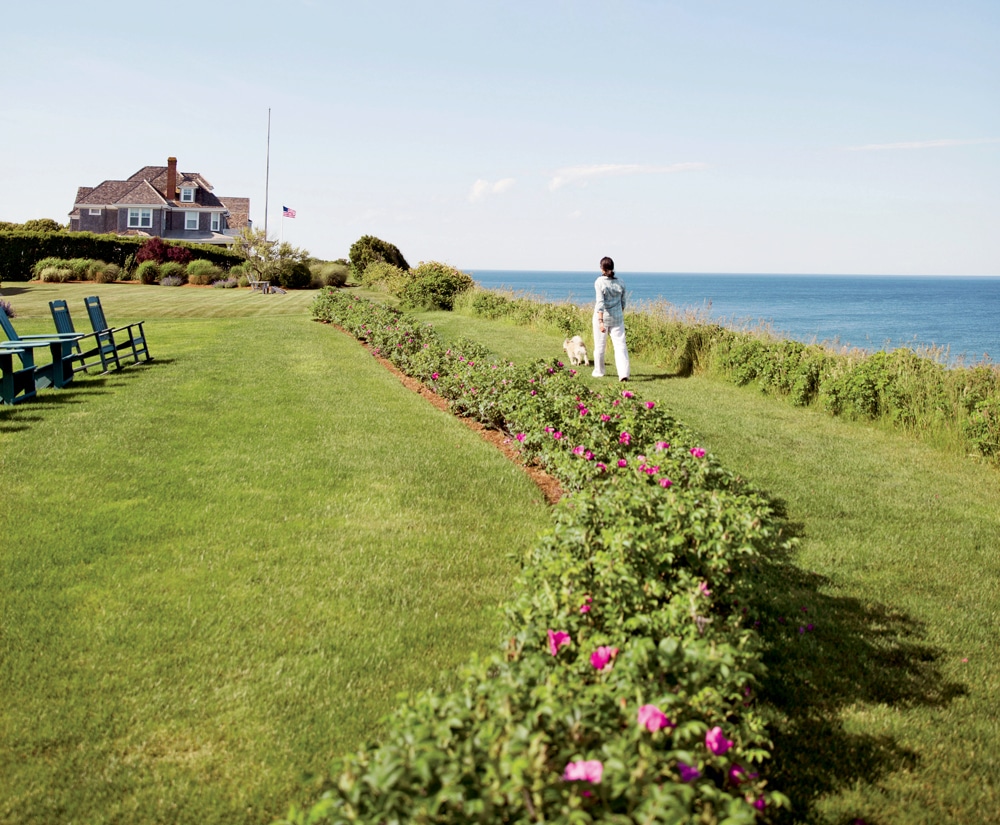
Photo Credit : Jim_Pintar/iStock
6. Stroll the ’Sconset Bluff Walk
Headed to Nantucket? Make time to seek out the ’Sconset Bluff Walk, a footpath that runs behind private homes and along the bluffs, offering views of both manicured backyards and wide-open ocean. Plus: There’s a lighthouse at the end.
7. Visit a Shaker Village
While their views on pacifism, gender equality, and the abolition of slavery once put the Shakers decades ahead of the mainstream, time eventually caught up with this Utopian religious sect. The last two Shakers on earth make their home in Sabbathday Lake, Maine, which has been preserved as a living history museum, as have the Shaker villages in Pittsfield, Massachusetts, and Canterbury, New Hampshire. To explore these austere but beautiful rural places, though, is to feel a sense of harmony that is very much alive.
8. Snap a Photo at Vermont’s Sleepy Hollow Farm
CURRENTLY CLOSED TO VISITORS
With its big barns, late-1700s farmhouse, and knack for catching the light, this property outside Woodstock, Vermont, is pure catnip for photographers. On a crisp fall morning, the narrow road to Sleepy Hollow Farm might be lined with as many as 20 cars, as pros and amateurs alike hunker down with their tripods. No matter. You’ll get your shot too, and the chance to see all those Instagram “likes” piling up.

Photo Credit : Alex Gagne
9. Eat at Modern Diner
You can pass the time in Pawtucket, Rhode Island, marveling at the c. 1940 Sterling Streamliner that houses this, the first diner on the National Register of Historic Places.
See More:15 Best Diners in New England
10. Check In at a New Hampshire Grand Hotel
Time was, trainloads of wealthy Bostonians and New Yorkers would arrive in New England each summer in search of fresh air and more than a little pampering. Of the castlelike getaways that sprang up to serve them, only a few remain, all in the Granite State. There’s the Mountain View Grand in Whitefield and New Castle’s Wentworth by the Sea, but the grandest of all is the Mount Washington Hotel in Bretton Woods (today’s Omni Mount Washington Resort). Step into its Great Hall, replete with soaring ceilings, Tiffany art glass, and crystal chandeliers, and you’ll immediately fall under the property’s turn-of-the-century spell.
11. Have a Movie Moment at Marshall Point Lighthouse
When the producers of the 1994 film Forrest Gump looked for the perfect spot for their titular hero to finish an epic cross-country run, they found it on the wooden ramp to this Port Clyde, Maine, lighthouse, which had been waiting for its Hollywood close-up since 1858.
12. Buy L.L. Bean Boots at Their Birthplace
Leon Leonwood Bean revolutionized outdoor footwear in 1911 when he introduced boots made with leather uppers and rubber bottoms. And the original L.L. Bean flagship store in Freeport, Maine, opened in 1917, is still the place—no matter the hour of day—to get the full Bean boot experience, complete with a photo op next to the 16½-foot-tall replica (size 410, in case you’re wondering) just outside the main building.
13. Master Walking on Cobblestones
These picturesque old pavers can be found from Newport to the Old Port, but the bumpiest, lumpiest, most authentic cobbles live on Boston’s Beacon Hill (meaning even Brahmins have to watch their step).
14. Knock Back Some Grog and Sing a Sea Chantey at “the Gris”
Revolutionary Ale is the go-to order at the Griswold Inn and Tap Room in Essex, Connecticut, where shipbuilders and sailors were slaking their thirst as early as 1776.
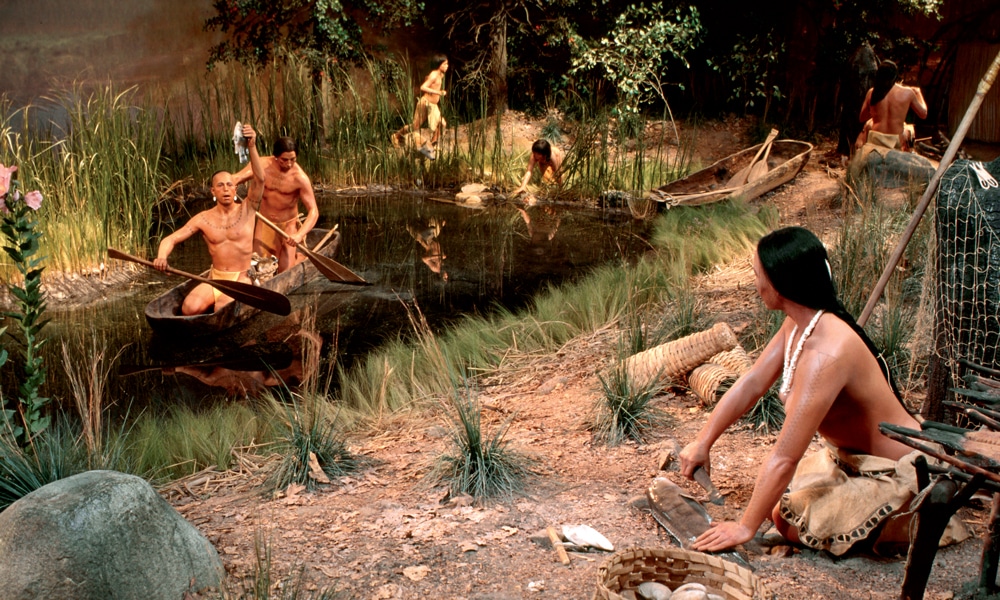
Photo Credit : Courtesy Mashantucket Pequot Museum
15. Time-Travel at the Mashantucket Pequot Museum
Walking past the dioramas at the Mashantucket Pequot Museum, a major museum of Native American culture in Ledyard, Connecticut, you might be inclined to speak in hushed tones, as if intruding on the ultra-lifelike models of indigenous people that help bring history to vibrant life.
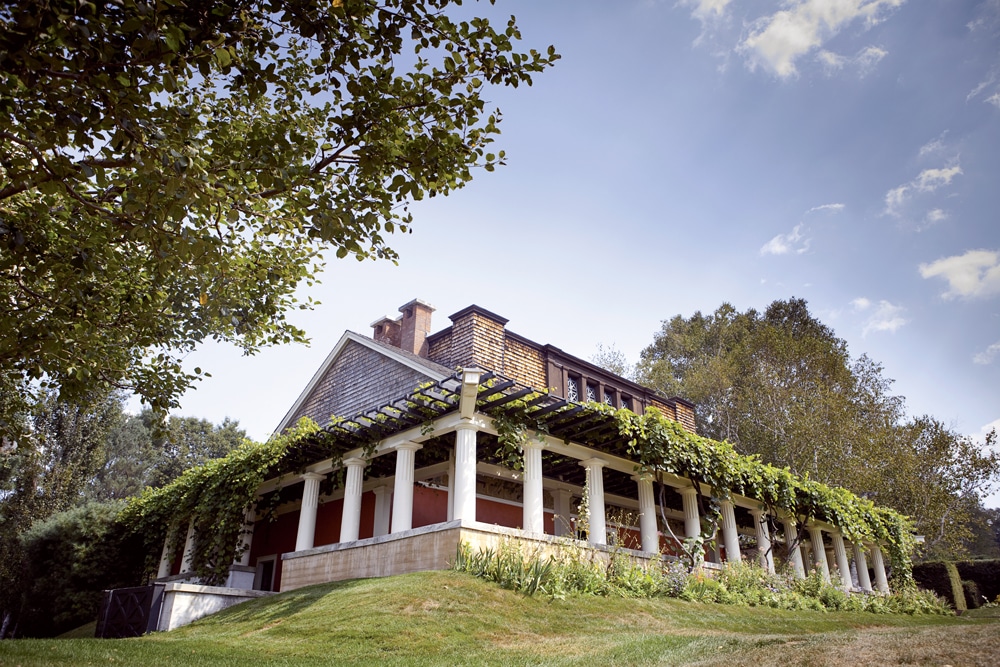
Photo Credit : Jarrod McCabe
16. Get Away from It All at Saint-Gaudens National Historical Park
A Cornish, New Hampshire, gem, Saint-Gaudens National Historical Park is one of the least-visited national parks in America—a fact you’ll find hard to believe as you wander the tranquil former estate of sculptor Augustus Saint-Gaudens, whose works include the stirring memorial to Robert Gould Shaw and the Massachusetts 54th Regiment, the nation’s first civic monument to the heroism of Black soldiers.
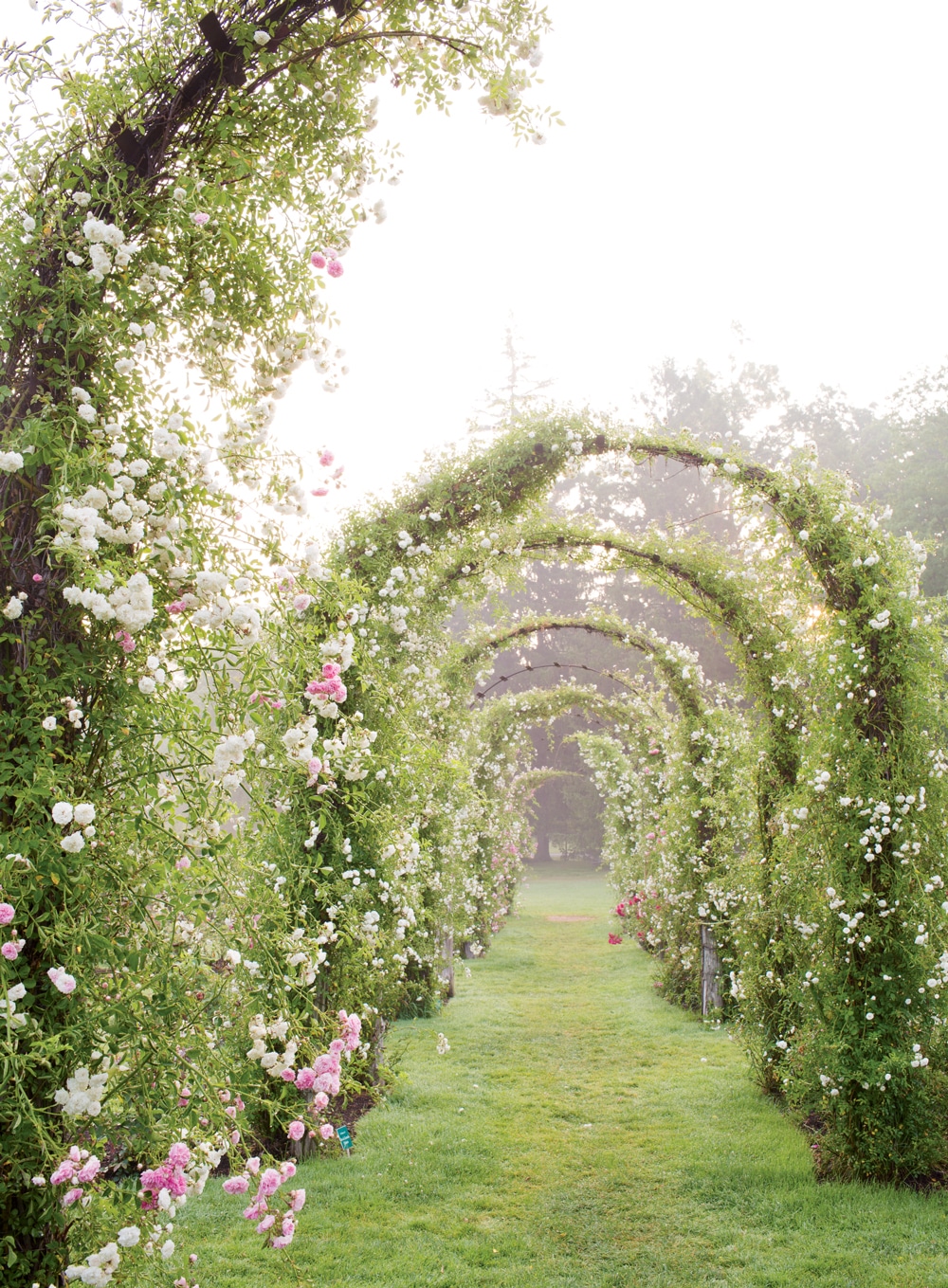
Photo Credit : Michael Piazza
17. Stop and Smell the Roses at Elizabeth Park
From June to October, Elizabeth Park, America’s oldest municipally operated rose garden is the undisputed star of this 100-acre urban Eden in West Hartford, Connecticut.
18. Notch the Holy Trinity of Class Field Trips
Like countless New England schoolchildren before you, go tramping down dirt roads to an era when blacksmiths still ply their trade, dinner is cooked over an open hearth, and indoor plumbing is not yet a thing. Spanning the 1600s to the 1800s, the living history museums Plimoth Patuxet (formerly Plimoth Plantation) and Old Sturbridge Village (MA) and Mystic Seaport (CT) make unforgettable classrooms for kids—and terrific playgrounds for history-loving adults.
19. Spend Hours Browsing at the Book Barn
First opened in 1988, this crazy multibuilding bookshop in Niantic, Connecticut, must be seen to be believed. Given the Book Barn‘s repository of half a million used books, a trail of bread crumbs may actually be required to find your way out.

Photo Credit : Aimee Tucker
20. Get Saltwater Taffy at the Goldenrod
At the Goldenrod, New England’s most enchanting candy factory in York Beach, Maine, you can watch through storefront windows as workhorse machines installed in the ’40s and ’50s crank out hundreds of pounds of taffy each day from mid-May through Columbus Day. Two-cent penny candy, molasses sponge hard candies, homemade ice cream, and an antique soda fountain add to the back-in-time allure.
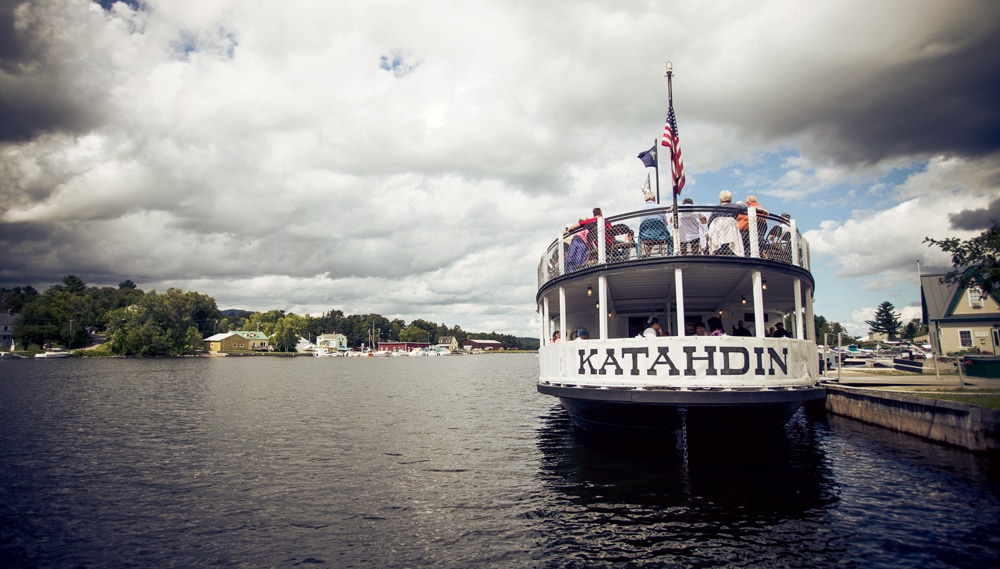
Photo Credit : Carl Tremblay
21. Step Aboard the Maine Steamboat Katahdin
History and wilderness beauty converge during a cruise on the 1914 steamboat Katahdin—affectionately nicknamed the Kate—which once towed tons of logs across New England’s second-largest lake, Moosehead, during the spring log drives that fueled Maine’s forest economy. Hailed as the last steamboat on Moosehead (though long since converted to diesel), the Kate takes you past islands and vistas of the North Woods you won’t see any other way.
22. Visit a Maple Sugar Shack
Turning tree sap into something as heavenly sweet as maple syrup only seems like magic. The truth is there’s a real process behind it, and during the six(ish) weeks in late winter and early spring that define maple season, you can get a taste for what’s involved. Observe, sample, and maybe even pitch in at sugar shacks like Morse Farm in Montpelier, Vermont, where, high-tech gadgetry aside, Burr Morse essentially follows the same recipe as his ancestors two centuries back. Sip the end result, then buy some of that good stuff (in all its forms: syrup, sugar, candy, cream) from the gift shop to take home. Because you can never have enough maple. Ever.
23. Go White-Water Rafting at the Forks
Since the late 1970s, the Forks region in central Maine has been New England’s center for white-water rafting trips, and whether you ride down the Kennebec, the Dead River, or the West Branch of the Penobscot, the adrenaline rush is for real.
See More:Guide to White-Water Rafting in Maine
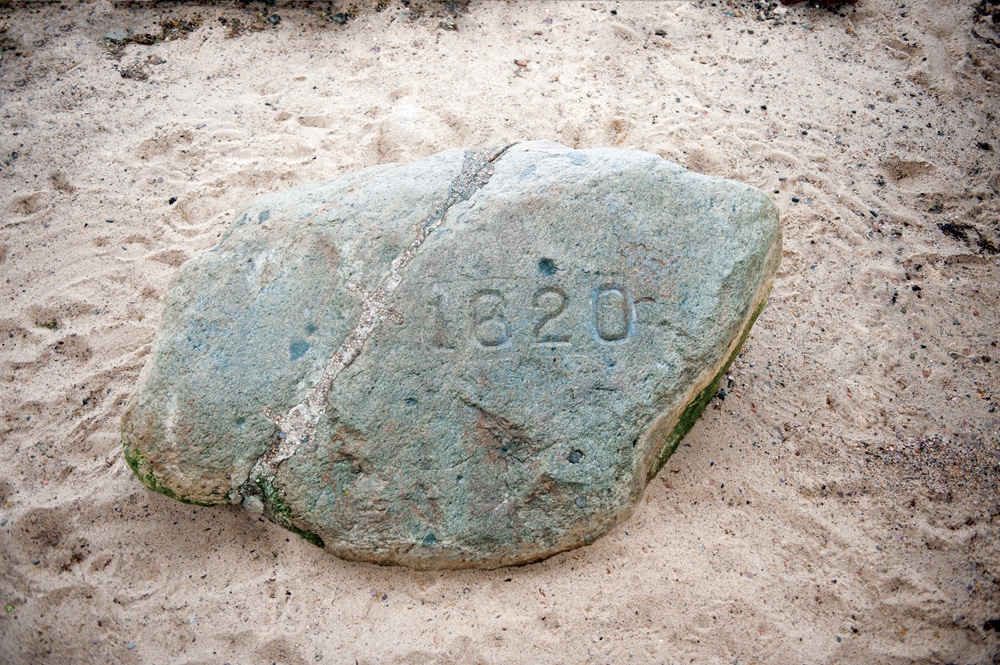
Photo Credit : Westoff/iStock
24. Make Peace with Plymouth Rock
Half sunken in the earth and looking rather like an oversize beanbag chair, this storied boulder in Plymouth, Massachusetts, elicits far fewer oohs and aahs than what floats in the harbor beyond: the 180-ton, 106-foot-long Mayflower II, the recently renovated replica of the Pilgrims’ vessel that stands as a testament to the skills of shipbuilders past and present.
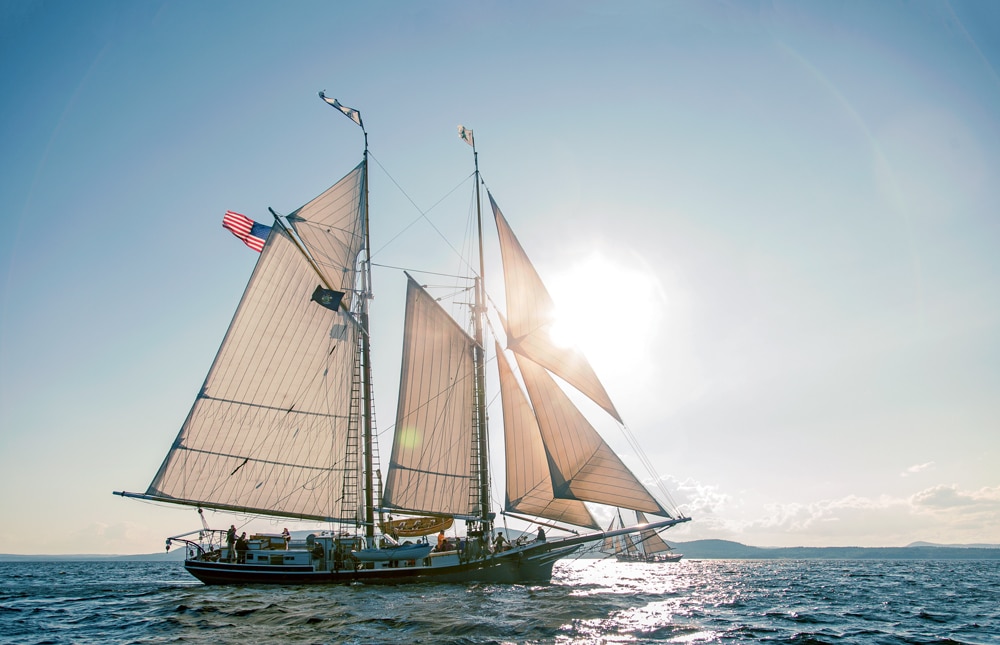
Photo Credit : Carl Tremblay
25. Experience a Maine Windjammer
There’s only so much you can see while flying down Route 1, folks. To truly behold the splendor of Maine’s coast, trade wheels for sails aboard a windjammer, a tall ship that slows the pace down to maybe 10 miles an hour as it weaves between spruce-blanketed islands and into hidden coves. And while day-trips are a fine option, it’s worth the splurge to book a longer voyage and see the coast in another, even more magical way—by starlight.
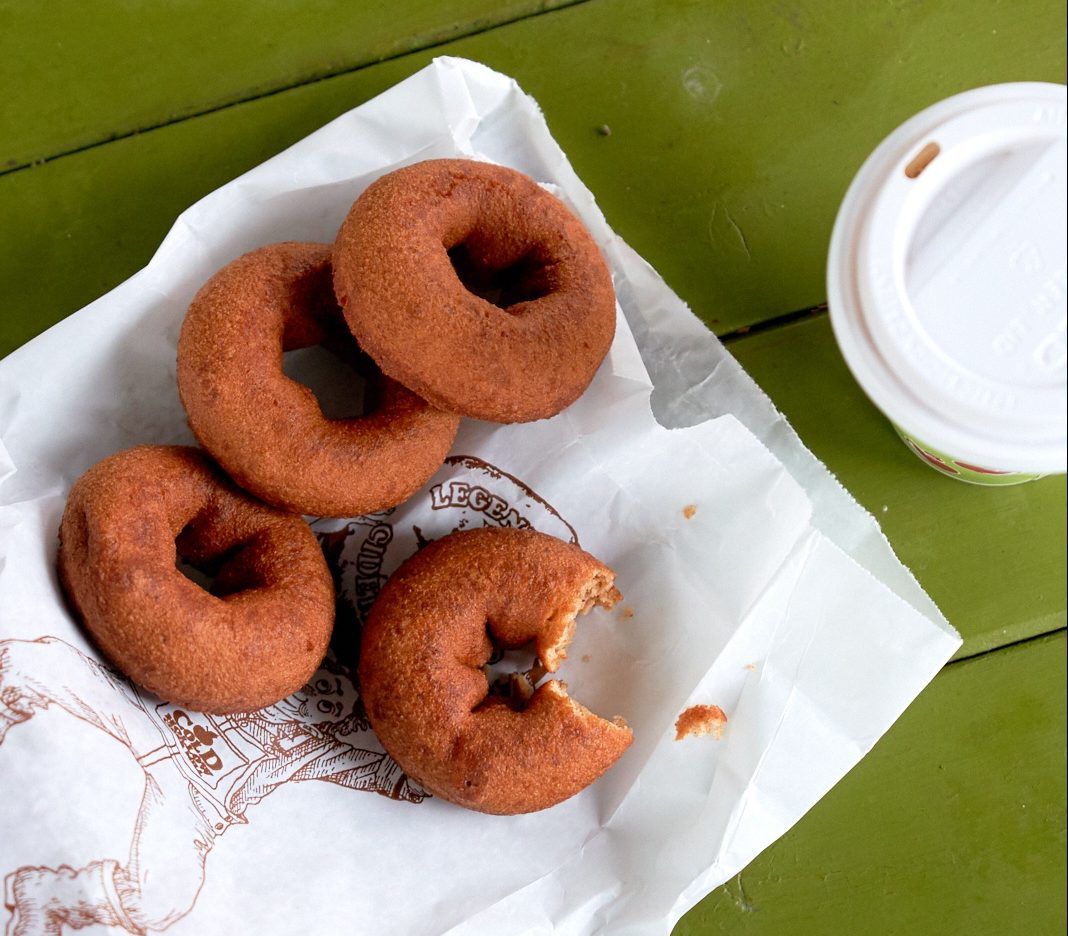
Photo Credit : Mark Fleming
26. Pick Apples and Eat Cider Doughnuts
It’s the fall-iest of New England fall outings: You park in a grassy lot, hop on a wagon, and ride out past rows of McIntosh, Honeycrisp, Cortland, and, ideally, a few regional heirlooms, like Roxbury Russet and Rhode Island Greening. Fill your bucket or bag (remembering to twist, not pull, the apples off), pay the per-pound price, and reward yourself with a cinnamon-spiced cider doughnut fresh from the fryer. And while there’s no shortage of orchards at which to practice this tasty ritual, here are a few picks to get you started:
- Belltown Hill Orchards in Glastonbury, Connecticut
- Red Apple Farm in Phillipston, Massachusetts
- Shelburne Orchards in Shelburne, Vermont
- Gould Hill Farm in Contoocook, New Hampshire
- Young Family Farm in Little Compton, Rhode Island
See More:Best Apple Orchards in New England and Best Cider Doughnuts in New England
27. Relish a New England–Style Hot Dog
How do you like your dog? Topped with a secret-sauce relish and mayo at Flo’s in Cape Neddick, ME? How about Rhode Island’s Olneyville New York System wiener with meat sauce, mustard, celery salt, and onions? Or maybe you crave the juicy burst of a Maine red snapper dog or Fenway Frank? We’ll take them all, content in the knowledge that New England is hot dog heaven.
See More:Best Hot Dogs in New England
28. Visit Connecticut’s Thimble Islands
This archipelago of more than 300 islands in Long Island Sound is reputedly where Captain Kidd buried his famous treasure—and definitely where some of the region’s high rollers live today.
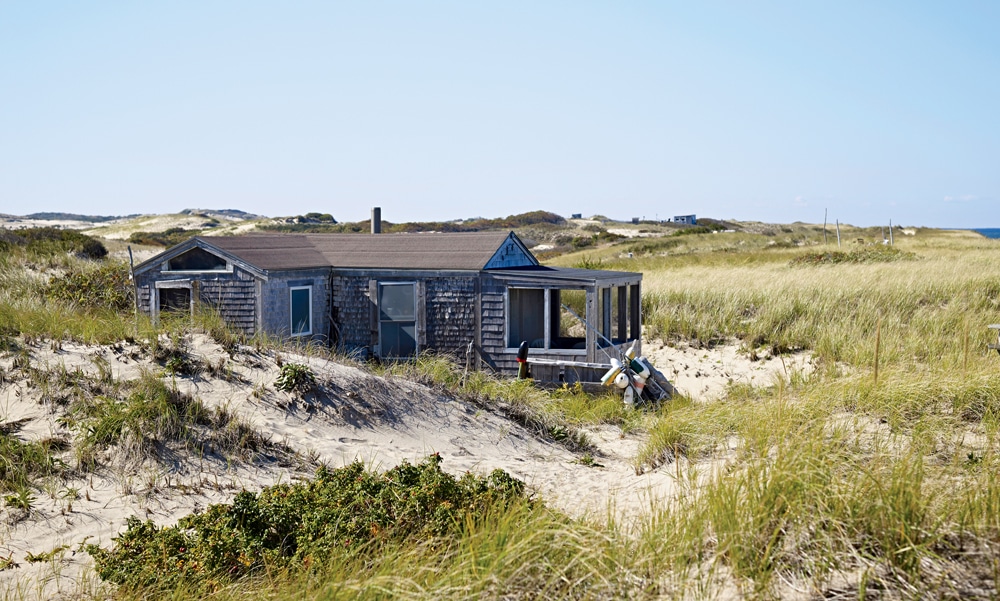
Photo Credit : Christopher Churchill
29. Explore the Other Cape Cod at the Cape Cod National Seashore
Smack dab in the heart of one of the nation’s most popular summer destinations is a pristine oasis of sand and water known as the Cape Cod National Seashore. This is the Cape Cod of open spaces, where traffic and crowds recede. Best of all, it’s the Cape Cod that all of us own, encompassing 43,600 acres of beaches and dunes, freshwater ponds and forests, that stretches from Chatham to Provincetown.

Photo Credit : Jarrod McCabe
30. Spend a Night in One of the AMC’s “High Huts”
Leave the tent at home. Thanks to the Appalachian Mountain Club, you can get made-from-scratch meals, running water, an actual bed, and the chance to commune with fellow hikers in the shadow of some of the White Mountains’ most majestic peaks.
31. Stroll an Ivy League Campus
The beautiful, brick-filled campuses of Harvard, Brown, Yale, and Dartmouth are stars in their own right even as they incubate the movers and shakers of tomorrow—one of which might even be your guide on a student-led tour.
32. Take In a Sea Dogs Game in Portland
With its Fenway-inspired “Maine Monster” and a lighthouse that rises from center field when the home team belts a home run, a summer Sea Dogs game in Portland, Maine, is one of the best and most distinctive minor league experiences in the country.

Photo Credit : Gabriela Herman
33. Experience Sol LeWitt’s Colorful Wall Drawings at Mass MoCA
Presented across nearly an acre of wall space, this Connecticut artist’s dizzyingly vibrant wall drawings could only be contained by a museum like Mass MoCA, the former industrial complex in North Adams, MA, that’s now one of the country’s most ambitious museums.
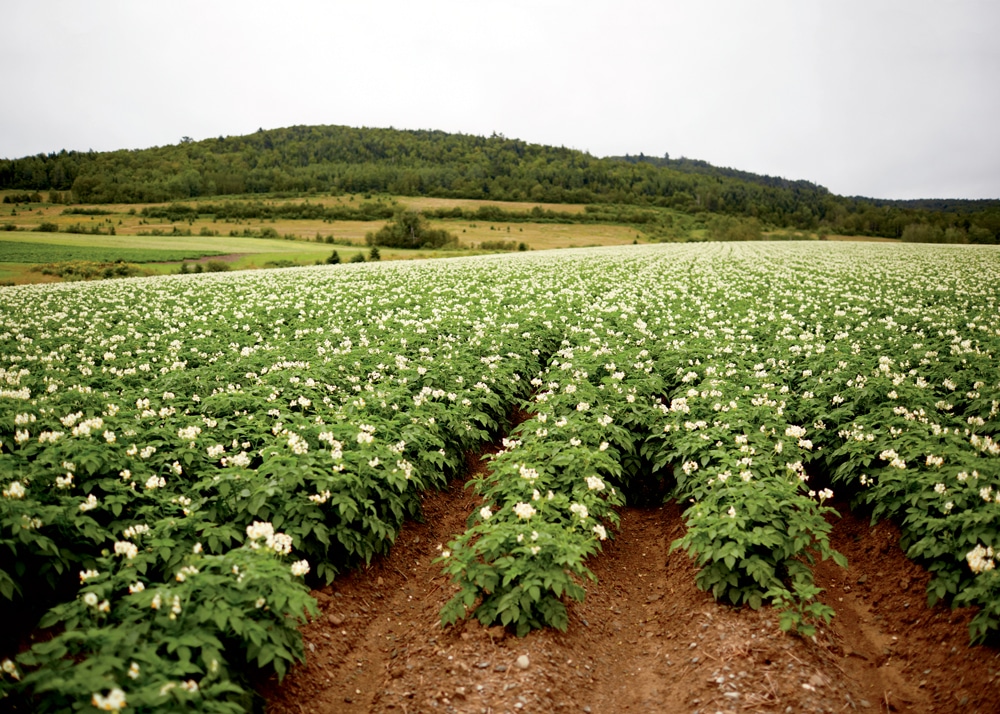
Photo Credit : Jonathan Kozowyk
34. Drive Through Aroostook County at Potato-Blossom Time
Three hundred miles north of Portland, Maine, vast swaths of farmland mark Aroostook County (called simply “the county” by Mainers). This is potato country, and in midsummer pink and white blossoms stretch to its horizon as if part of the sky itself.
35. Visit the Birthplace of Classic American Literature
Since Mark Twain is famed for his tales of the Mississippi, it may be surprising to learn that some of his most productive years were spent in Hartford, Connecticut. The mansion where he spun his yarns about Tom Sawyer and Huck Finn is now The Mark Twain House & Museum that—from the “speaking tubes” in the walls to the billiard room that served as his office—offers a fascinating glimpse of the author. If the Gilded Age is more your speed, set your course for Lenox, Massachusetts, and the elegant estate known as the Mount, where Edith Wharton wrote The House of Mirth and Ethan Frome. After touring it, find a place on the manicured grounds to sit with a good book—it’s literally what the place was made for.
36. Pay a Visit to the Portsmouth African Burying Ground
Outside New York, the only DNA-verified colonial-era African cemetery in the Northeast is in Portsmouth, New Hampshire, which in 2015 dedicated a memorial park at the site that had been built on, paved over, and virtually forgotten for decades. Today you can honor a part of Portsmouth’s history that refused to die.
37. Stroll the Freedom Trail in Boston
Walk Boston’s Freedom Trail to see how our nation got started, then indulge in the prime people-watching scene at Faneuil Hall to see how it’s looking today.
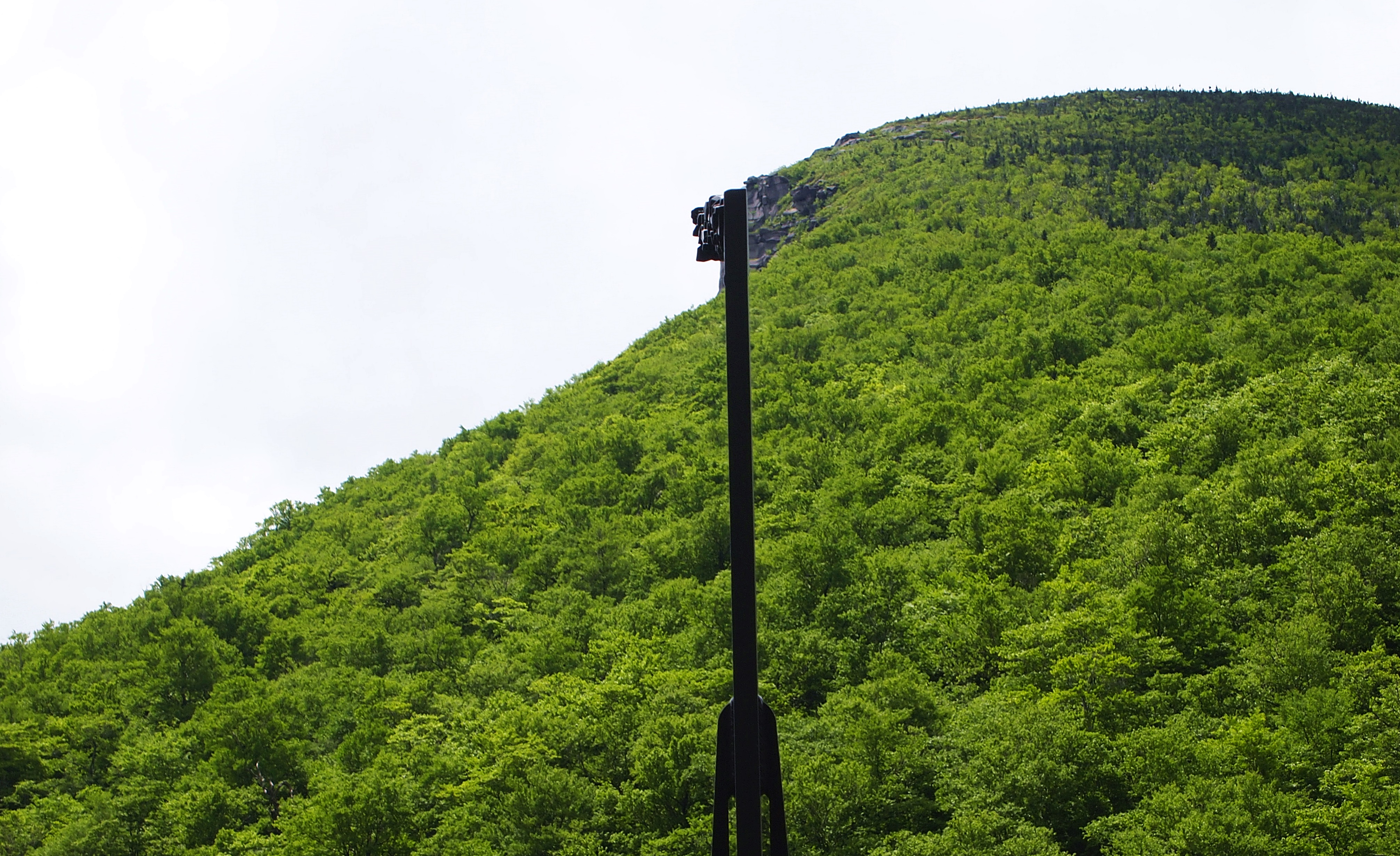
Photo Credit : Bethany Bourgault
38. Pay Your Respects to the Old Man of the Mountain
Take a waterfall-crowned hike through Flume Gorge or a high-flying tram ride up 4,000-foot Cannon Mountain, but on your visit to New Hampshire’s Franconia Notch State Park be sure to leave time to visit Profiler Plaza, the site where the Old Man of the Mountain’s craggy visage once looked out over the notch.
39. Experience the Gilded Age in Newport, Rhode Island
Spectacularly juxtaposed with the natural beauty of the Atlantic coastline, Newport’s historic mansions are must-see monuments to Gilded Age decadence. You can get their flavor from the Cliff Walk, a three-and-a-half-mile public path that runs right through the backyards of some of Newport’s grandest properties. Several of the Newport Mansions also offer tours, but if you can experience only one, make it the Breakers: This 70-room Vanderbilt family “cottage” is over-the-top even by Newport standards.
40. Go Off the Beaten Path to a Cult-Favorite Brewery
For our money, the best kind of beer run is the one that can double as a day trip. For fresh air and fresh suds, the reigning mecca is Hill Farmstead, a multi-award-winning brewery in tiny Greensboro Bend, Vermont, built on land that’s been in founder Shaun Hill’s family for generations. Another rural gem: Kent Falls Brewing in Kent, Connecticut, a farm-based setup where you can not only score ales and IPAs but also some just-laid eggs.
41. Shop at the Original Vermont Country Store
At the original Vermont Country Store in Weston, founded in 1946, you can stroll creaking wood floors, plunder the penny candy, and revel in your haul while rocking on the front porch.
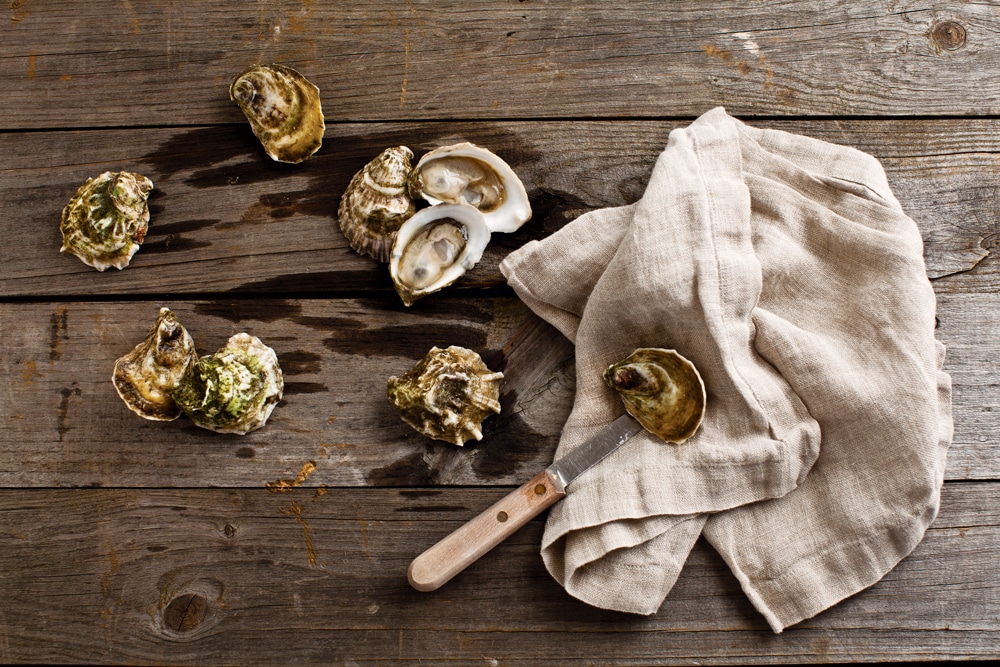
Photo Credit : Julie Bidwell
42. Taste Local Flavor at Matunuck Oyster Bar
You can’t get much closer to the source than Matunuck Oyster Bar in South Kingstown, Rhode Island, where owner Perry Raso and crew raise their signature sweetly mineral oysters in the waters of Potter Pond, right off the restaurant’s outdoor decks. Grab a seat and slurp up Rhode Island flavor at its finest.
43. Eat Like a New Englander
One of the best things to do in New England is eat, but New England’s most iconic foods—chowder, baked beans, blueberry pie, and the like—are more than mere items on a bucket list. They’re edible artifacts, telling stories of immigration, history, and agriculture. You can learn more about the history of each dish in our expanded “How to Eat Like a New Englander” post, but here’s where you can order an outstanding example of each.
- Clam Chowder at Chatham Fish Pier in Chatham, Massachusetts
- Blueberry Pie at Two Fat Cats in Portland or Helen’s in Machias, Maine
- Baked Beans at Boston’s Union Oyster House
- Stuffies at Amaral’s in Warren, Rhode Island; Anthony’s in Middletown, Rhode Island; and PJ’s Family Restaurant in Wellfleet, Massachusetts
- Yankee Pot Roast at the Griswold Inn in Essex, Connecticut; Grill 23 in Boston; and the Common Man restaurants in New Hampshire
44. Catch a Glimpse of the Underground Railroad
Starting with Vermont, where slavery was outlawed in 1777, New England was an early leader in abolition—which meant that when federal fugitive slave laws were enacted, it was at the fore of the now-legendary interracial, interfaith effort that helped slaves escape to freedom. The Underground Railroad passed through more than 80 of the region’s cities and towns, and today there are dozens of historical sites tied to that era. Among them: Boston’s African Meeting House, the David Ruggles Center (Florence, MA), and Rokeby Museum (Ferrisburgh, VT), which stands out for exceptional storytelling and a beautiful rural setting.
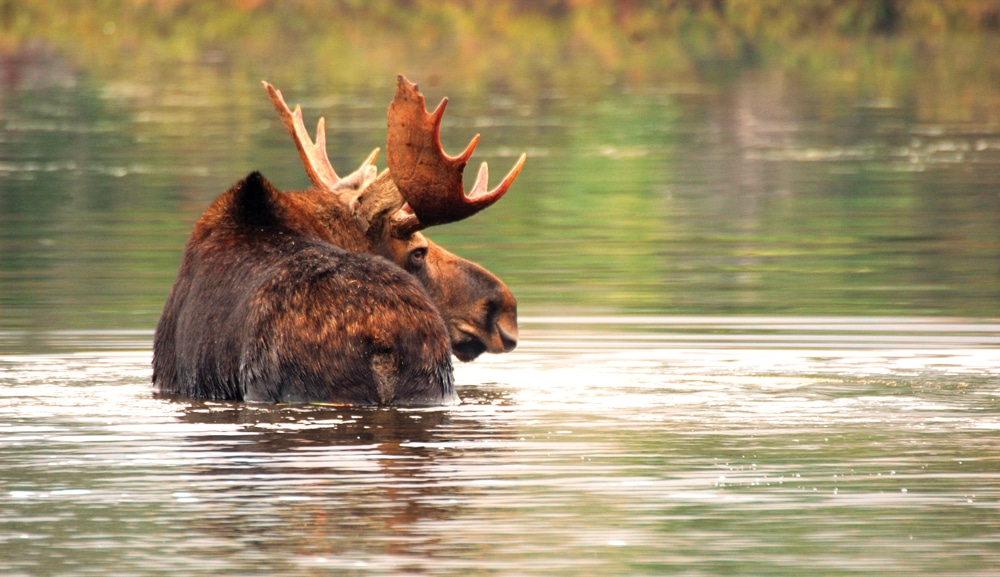
Photo Credit : kjmphotography/istock
45. Spot a Moose
In New England’s far northern reaches, moose watching is a cottage industry in which local guides lead you to the animals’ haunts, often by van but sometimes by boat. And boy, there is nothing like sharing a stare with a moose as your pontoon boat or canoe slides silently past.
See More:How, When & Where to Spot a Moose in New England

Photo Credit : Carlton SooHoo/Courtesy of Dog Mountain
46. See the Answer to “Who’s a Good Boy?” at the Dog Chapel
At the 150-acre haven dubbed Dog Mountain in St. Johnsbury, Vermont, is a wee church filled with founder Stephen Huneck’s dog-centric art and visitors’ heartfelt tributes to four-legged friends.
47. Be Haunted by Art at the Gardner
Goose bumps are guaranteed when you stand before what is arguably John Singer Sargent’s masterwork, the massive, moody 1882 painting El Jaleo, at Boston’s Isabella Stewart Gardner Museum. Then, head upstairs to contemplate the ghostly empty frames left behind in the world’s largest museum heist, in which thieves vanished with 13 priceless works including Rembrandt’s Christ in the Storm on the Sea of Galilee. After three decades, the art’s whereabouts are still unknown.
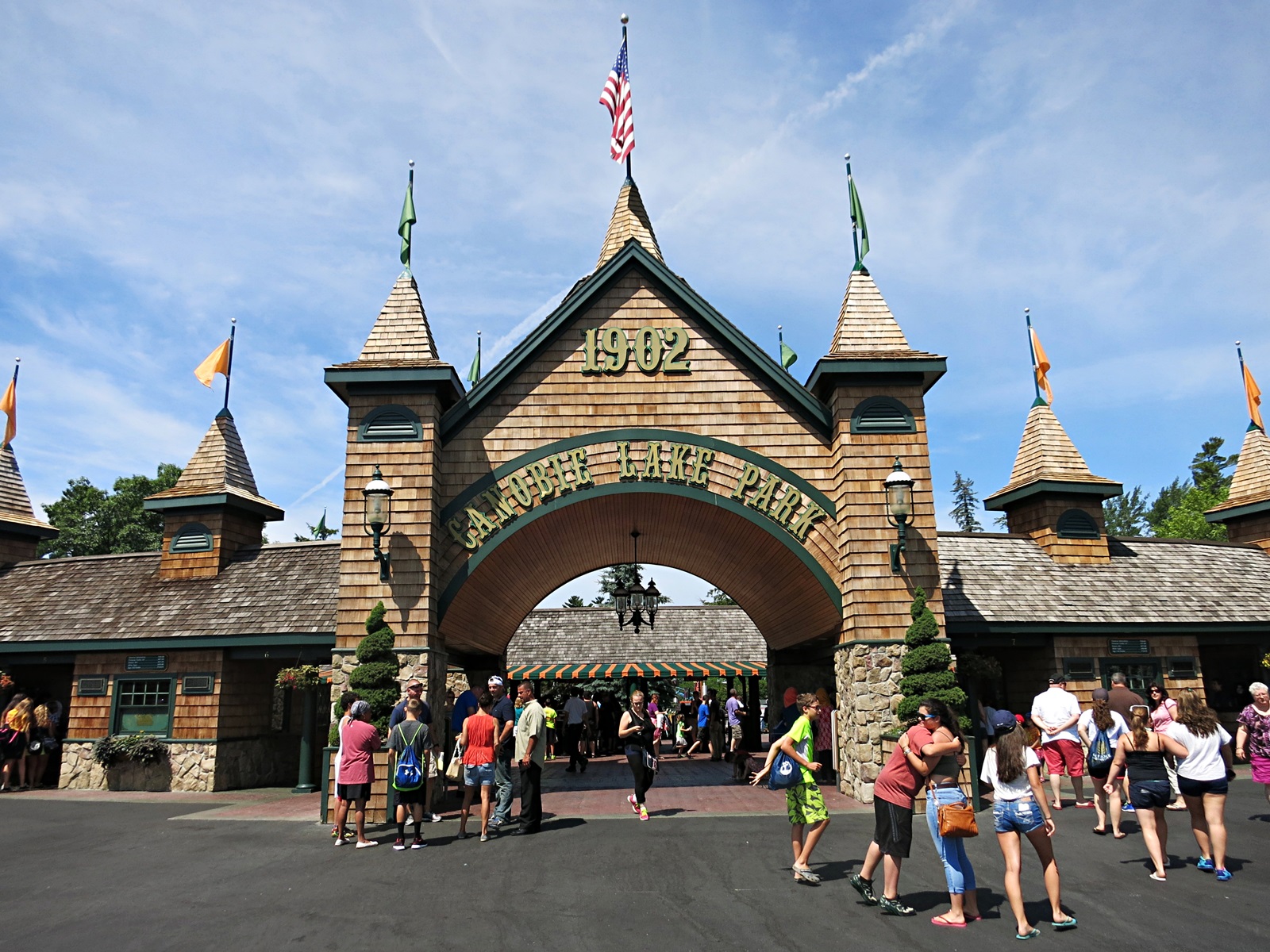
Photo Credit : Aimee Tucker
48. Ride the Nostalgia at Canobie Lake Park
It began in 1902 as a lakeside botanical park, but Canobie Lake Park in Salem, New Hampshire, is still going strong as a beloved old-timey amusement park that hits all the essentials: small-kid-friendly, immaculately clean, a bit homespun, but with just enough legit thrill rides to satisfy adrenaline junkies.
49. Fall Under the Spell of a Lighthouse
George Bernard Shaw once said, “I can think of no other edifice constructed by man as altruistic as a lighthouse. They were built only to serve.” And in truth these simple structures continue to endure as symbols of security and hope even after retired from use. From the candy cane–striped West Quoddy Head Light in the farthest reaches of Down East Maine to Newport, Rhode Island’s trim and tidy Rose Island Light (whose tower rises from a keeper’s house where you can actually spend the night), New England has some 200 historic beacons scattered across its shores. Happy hunting—we’ll leave the light on for you.
50. Mangia to Your Heart’s Content on Federal Hill
A favored stop for Sinatra when touring New England in the ’50s, this Providence, Rhode Island, neighborhood invites you to feast on delicacies imported by Italian immigrants and soak up the Old World vibe of its piazza on a summer night.
51. Eat Your Way Through an Economy-Size Block of Vermont Cheddar
It’s a country store staple: a big block of cheddar on the counter, kept under glass and divvied up into wedges. If you track your own household’s cheddar consumption, you may find that it adds up to five pounds between September and March. Conveniently, Vermont cheddar comes in hefty portions, from the three-pound brick of waxed Cabot sharp to choose-your-own-adventure cuts of Grafton clothbound.
52. Stroll the Marginal Way in Maine
Southern Maine’s signature walkway is a smooth bluff path in Ogunquit that edges the ocean for just over a mile with stunning views of both sandy beach and rocky shore. Benches invite you to rest and contemplate tide pools, crashing waves, and wetsuited surfers. Finally, the Marginal Way path spills into Perkins Cove, a working harbor that shares narrow lanes with fish shacks, ice cream stands, and shops, all against the backdrop of the sea.
53. Get Inspired by Norman Rockwell’s Freedom of Speech
One of nearly 1,000 works at the Norman Rockwell Museum in Stockbridge, Massachusetts, this 1943 illustration—part of the famed “Four Freedoms”—finds universal resonance in a New England town meeting.
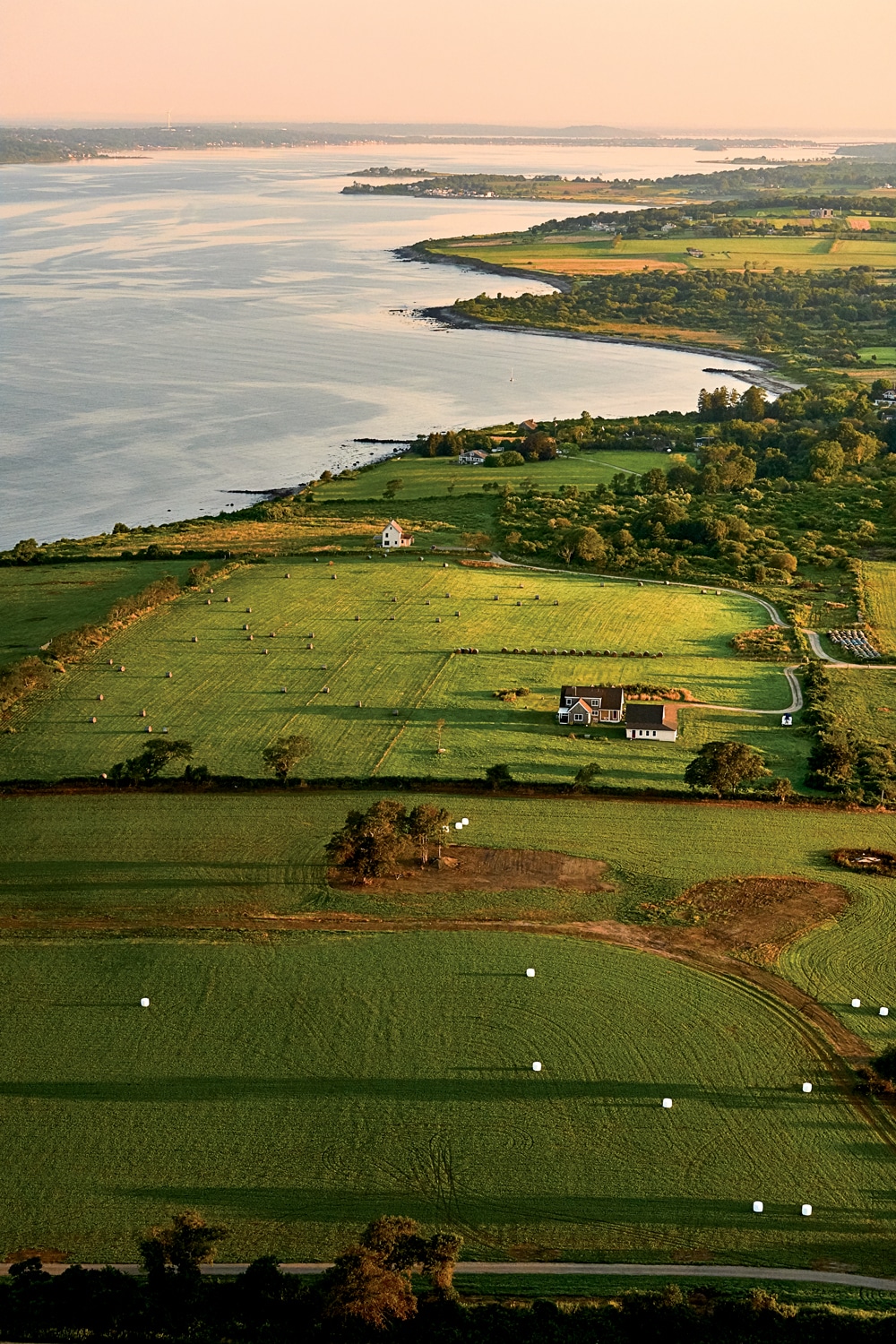
Photo Credit : Mark Fleming
54. Delight in the Hidden Beauty of the “Farm Coast”
Farmers and fishermen share a landscape of meadow, barns, and sea that stretches from Tiverton down to Little Compton in Rhode Island, then veers east to nudge into Massachusetts. Dotted with farm stands and historic villages, this region remains one of those under-the-radar spots that travelers discover and wonder why it took them so long.
55. Bliss Out with a Maple Creemee
While “creemee” is merely a catch-all term for softserve, a maple creemee is a uniquely Vermont treat: creamier than soft-serve and shot through with the flavor of real maple syrup. The best maple creemees tend to be a little richer than average, and you can find sterling examples at Vermont Cookie Love in North Ferrisburgh, Canteen Creemee Co. in Waitsfield, and Al’s French Frys in South Burlington.
56. Don’t Miss Out on Hearing the Kotzschmar Organ
When the organist touches the keys of the world-famous Kotzschmar Organ at Merrill Auditorium in Portland, Maine, its array of 6,857 pipes comes alive, filling the air with music that would wake the saints. Listen, simply listen.
57. Have Your Consciousness Raised at the Bread and Puppet Theater and Museum
At the Glover, Vermont, headquarters of Bread and Puppet, a puppeteering troupe whose long legacy of activism goes back to the Vietnam War protests, you can check out one of the world’s largest collections of oversize puppets and masks—and, if a performance is scheduled that day, see how they’re used to help call out modern-day abuses of power.
58. Reconnect with the American Revolution
From the Bennington Battle Monument in Vermont to the American Independence Museum in New Hampshire, New England has scores of Revolutionary War sites to explore, each with its own story to tell of the nation’s founding. For maximum fife-and-drum drama, it’s impossible to beat Minute Man National Park in Massachusetts: Not only does it encompass the town green where colonists took heed of Paul Revere and intercepted the British on April 19, 1775, as well as the Old North Bridge, where the “shot heard round the world” was fired, but each year on Patriots Day the whole thing is brought to life in an epic reenactment.
59. Revisit the Amistad Uprising That Galvanized the Abolitionist Movement
The inspiring story of the Amistad revolt—when kidnapped Africans took over their slave ship in 1839—lives on in New Haven, Connecticut, from the 14-foot monument at City Hall to the reproduction schooner berthed at Long Wharf.
60. Be Romanced by a Covered Bridge
Back in horse-and-buggy days, covered bridges with lengthy spans were known as “kissin’ bridges,” because of the moment of privacy they provided. While we can’t recommend such activities in today’s faster-moving vehicles, you can sense the interlude that might have been while traversing the 1866 Cornish-Windsor bridge, which crosses the Connecticut River between Cornish, New Hampshire, and Windsor, Vermont. Until an Ohio bridge stole the crown in 2008, this 449-foot-long span had been the country’s longest covered bridge. It’s still terrifically scenic, as are New England’s other 200-odd covered bridges. (Note: If a perfect photo is what you’re after, Connecticut’s West Cornwall Bridge is a fall favorite.)

Photo Credit : Elizabeth Cecil
61. Wander Around the Gingerbread Cottages on Martha’s Vineyard
The enclave of 300-plus colorful Victorian gingerbread cottages known as the Oak Bluffs Campground can hold its own against any exotic garden.
62. See Immigrants’ Contributions Carved in Stone at Hope Cemetery
The master granite carvers who migrated from Italy to Barre, Vermont, created monuments here that are as much works of sculptural grandeur as they are memorials. Founded in 1895 in the so-called “Granite Capital of the World,” Hope Cemetery includes a number of graves of the sculptors themselves—with some tombstones carved by the very artists who now lie beneath them.
63. Hike Mount Monadnock
Standing at 3,165 feet, Mount Monadnock is one of the most-climbed summits in the world for a reason: In under two hours, you can be atop the only peak in New England that offers views of all six states.
64. Unpack the Ultimate Picnic Experience at Tanglewood
Since 1937, the Boston Symphony Orchestra has made its summer home at Tanglewood, a Berkshires estate turned performance space. Though its main, open-air venue holds more than 5,000, many regulars at Tanglewood’s annual music festival wouldn’t dream of sitting anywhere besides the lush, expansive lawns. Do as they do: Pack a fine picnic meal, bring a comfy blanket, and stretch out and soak up the sounds of a world-class orchestra on a perfect summer night.
65. Put Yourself into a Painting by Wyeth, Hopper, or Homer
A jaunt along the New England coast can be a scavenger hunt for art lovers, since many of the scenes immortalized by big-name painters are still recognizable today: from the huddled seaside cottages of Edward Hopper’s Corn Hill in Truro, Massachusetts, and the pounding surf captured by Winslow Homer at Prouts Neck, Maine, to the sweeping field and weather-beaten farmhouse in Andrew Wyeth’s Christina’s World, set on a property in Cushing, Maine, that along with the painting itself is now part of Rockland’s Farnsworth Art Museum.
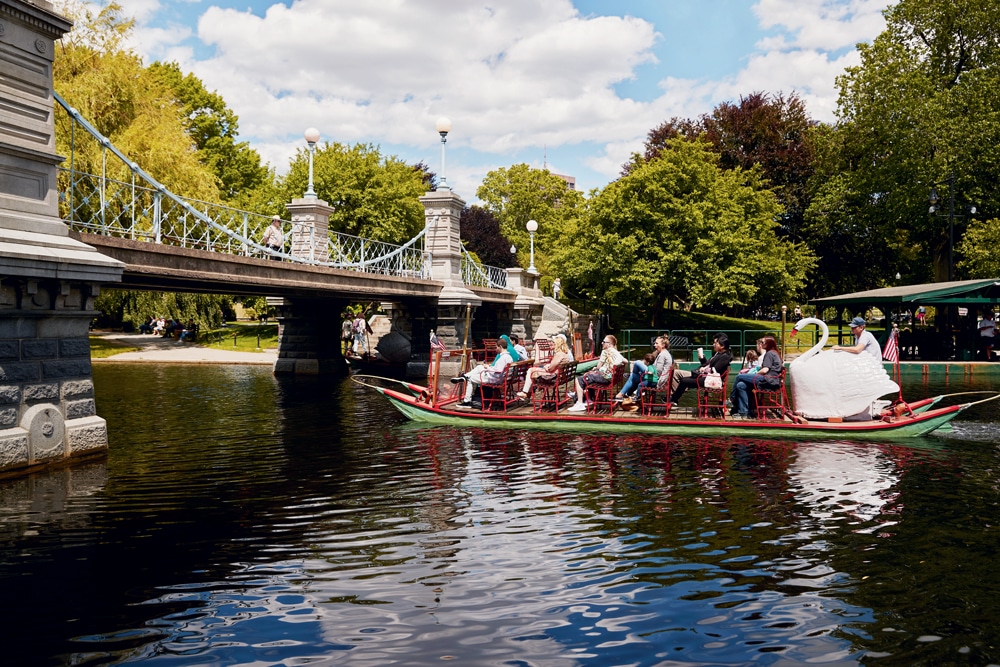
Photo Credit : Emily Kan
66. Ride Boston’s Swan Boats
Glide back into childhood on Boston’s storied Swan Boats. You may even see Mrs. Mallard trailing along behind you, hoping for a peanut.
67. Fill Up at the Holy Donut
The Holy Donut in Portland, Maine, turns out 20 flavors of instantly addictive doughnuts (don’t miss the dark chocolate sea salt) using a twist from long-ago cooks in potato-growing Aroostook County: For a surpassingly moist and tender crumb, just add spuds.

Photo Credit : Carl Tremblay
68. Cruise the Mohawk Trail
Leisure driving as a pastime—aka “Let’s hop in the car”—can trace its start back to 1914, when Massachusetts lawmakers designated a 63-mile stretch of Routes 2 and 2A as the nation’s first scenic byway and named it the Mohawk Trail. More than a century later, its ability to bring motorists into the landscape is as appealing as ever. You’re in a small town … then passing through farmland … then cresting a mountain … then rambling beside a river. It’s no I-90, and, refreshingly, that’s kind of the point.

Photo Credit : Jerry Monkman/Ecophotography
69. Hike the Knife Edge at Baxter State Park in Maine
This mile-long path atop Maine’s Mount Katahdin has forced more than a few climbers to crawl as it narrows to a yard wide, above drop-offs of 1,000 feet or more. Conquer the Katahdin knife edge, and you’ll reach the summit—and feel you’ve done something extraordinary. How many hikes do that?
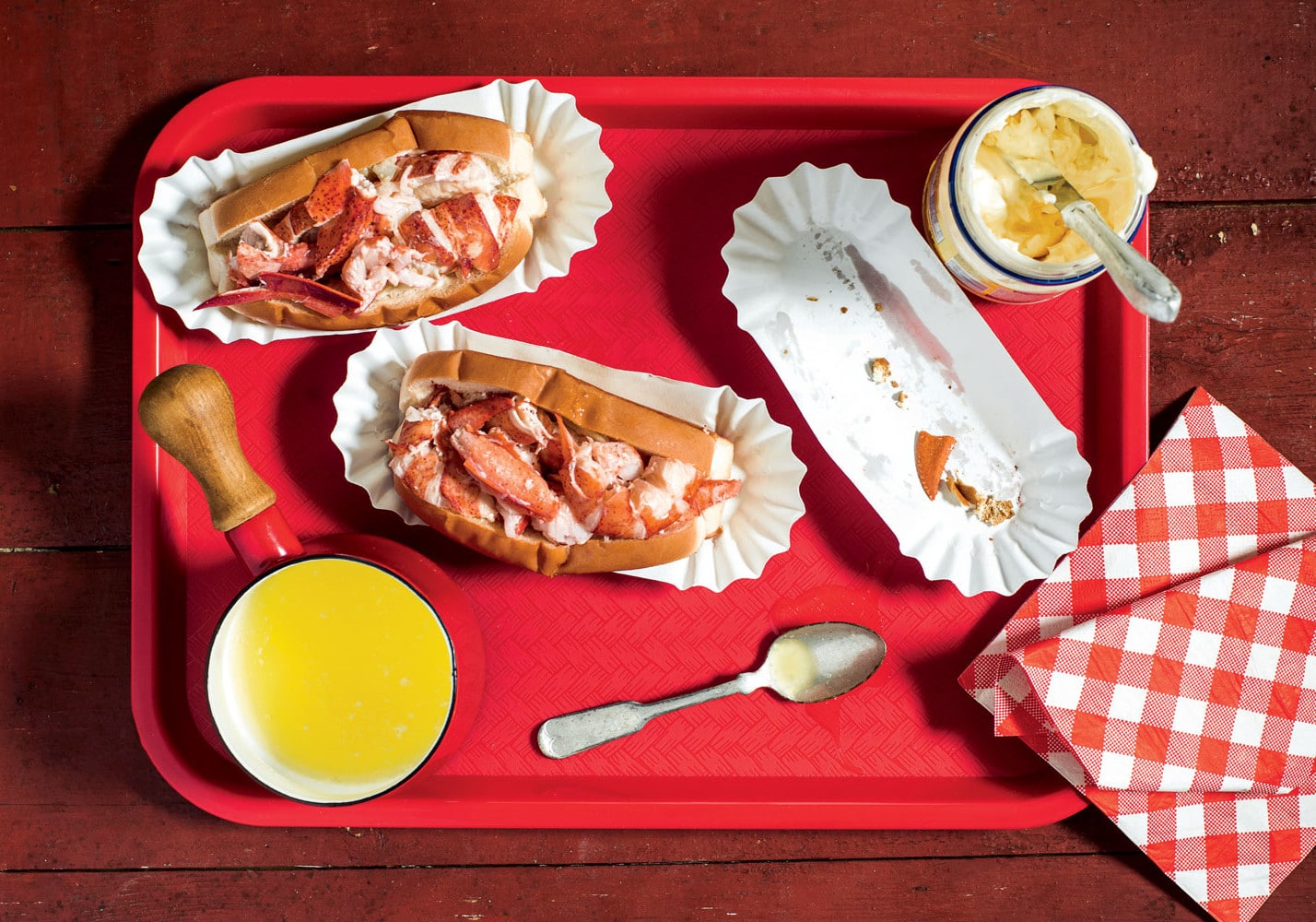
Photo Credit : Mark Fleming
70. Savor Lobster Rolls — Both Hot and Cold
When it comes to cold-with-mayo vs. hot-and-buttered, we are Team Both. What matters is the quality of the preparation. Is the mayo mixed with the meat just before serving? Is the lobster warmed gently but not overcooked? Two spots where the answer is a big “yes” are McLoons in South Thomaston, Maine, where the mayo for the cold lobster rolls is ingeniously slathered on the bun rather than tossed with the meat, and Lobster Landing in Clinton, Connecticut, where owner Enea Bacci has perfected the hot roll by par-cooking the lobster in broth, then gently tossing the meat with butter in a warm pan.
71. Experience the Ocean Cliffs on Maine’s Bold Coast Trail
No, you don’t really have the entire Gulf of Maine to yourself on the Bold Coast Trail. It just seems that way on this pristine and oftentimes solitary 10-mile trek along beautifully rugged ocean cliffs in Cutler, Maine.
72. Get a Cone at the Ben & Jerry’s Factory
Its pints, scoops, and other frozen treats might be famous all over the world, but its gee-whiz factory tour, fully stocked gift shop, and fascinating “Flavor Graveyard” can be experienced only at the Ben & Jerry’s Factory in Waterbury, Vermont.

Photo Credit : Julie Bidwell
73. Order Up a New Haven–Style Apizza
After southern Italian immigrants to this Connecticut city began baking coal-fired pies that were crisper, thinner, and more topped-to-the-edges than the traditional Neapolitan pizza they’d known back home, New Haven-style pizza (or “apizza”) was born. Almost a century later, fans still fight over the supremacy of Sally’s versus Frank Pepe’s, but locals also savor the pies at Modern and the relative newcomer BAR.
74. Check Out “Oh-My-Gosh” Corner in Maine
Wait for winter, then take Maine’s Route 27 north along the Carrabassett River, heading to Sugarloaf Mountain, the state’s biggest ski destination. The slopes stay hidden behind the forest until you take the bend, and there it is … and then you say …
75. Explore the Pine Tree State with a Registered Maine Guide
There’s no better way to explore Maine’s woods and waters than alongside one of these wilderness experts, who have been offering their services to hunters and anglers since the 19th century. “The typical Maine Guide is just as much a product of the soil as are the mighty forests,” noted one outdoor writer in 1901, “and his replica is not to be found elsewhere.”

Photo Credit : Courtesy Mary Baker Eddy Library
76. Visit the Mapparium in Boston
Have your whisper heard round the world inside Boston’s acoustically mind-blowing Mapparium. And oh yes, marvel at standing inside a three-story stained glass globe.
77. Go Camping at Cobscook Bay State Park
If America had been explored from west to east rather than east to west, the 888-acre Cobscook Bay State Park in Maine, with its breathtaking tidal flow that seems to drain the sea, might be our Yosemite—and it’s worth trekking the 100 miles beyond Bar Harbor to pitch a tent here.
78. Set Off on a Famous Foliage Drive
Smugglers’ Notch. Acadia’s Park Loop Road. The Mohawk Trail. When it comes to the A-listers of New England foliage roads, you owe it to yourself to see what all the fuss is about. Take the Kancamagus Highway: Sure, this 34-mile stretch of Route 112 between Lincoln and Conway, New Hampshire, can be jammed with cars and RVs on a brilliant autumn day, but the payoff is undiminished. Up and up you go, to 2,860 feet, with a scattering of lookouts where you can pull over for views of the Mad River Notch and the chance to linger among all those White Mountain peaks.
See More:10 Best Fall Road Trips in New England and 4 Favorite Quiet Fall Foliage Drives
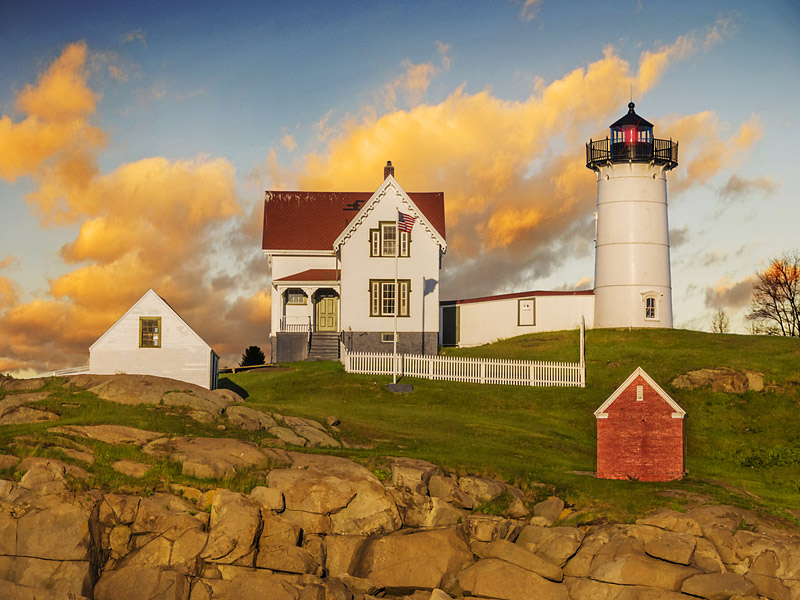
Photo Credit : Dreamstime
79. Snag a Selfie with the Nubble Light
When the Voyager spacecraft blasted off in 1977 for Jupiter and beyond, they carried (for the benefit of any curious aliens) images showing what Earthlings revered: the Great Wall and the Grand Canyon, yes, but also Nubble Light, the pride of York, Maine.
80. Eat Fried Clams at Woodman’s and J.T. Farnham’s
As the story goes, fried clams were invented in 1916 by Lawrence “Chubby” Woodman of Essex, Massachusetts, when he threw some battered bivalves into the hot oil at his potato chip stand. Essex has since become the nation’s fried clam capital, and there are prime examples to be had at Woodman’s and J.T. Farnham’s, which both offer views of the Essex River salt marshes where some of the world’s best clams are raised.

Photo Credit : Billie Weiss/Boston Red Sox/Getty Images
81. Experience the Green Monster at Fenway
You may have seen the Green Monster on television, but a true appreciation of Fenway Park’s 37-foot-high left field wall requires the smell of mown grass, the sizzle of franks on the grill, and the thump of the ball off the beast itself.
82. Bike Vermont’s Champlain Islands
In the world of road biking, the country lanes of Vermont’s Champlain Islands are spoken of with reverence, leading as they do through the heart of Lake Champlain and offering views of the Adirondacks and the Green Mountains. There’s even the chance to ride a little seasonal ferry whose sole purpose is to carry bicyclists across a narrow gap in a railroad causeway between the mainland and the islands.
83. Tackle the Great Vermont Corn Maze
Get all turned around in New England’s biggest agricultural conundrum—aka the 24-acre Great Vermont Corn Maze in Danville, Vermont.
84. Eat a Whoopie Pie
Any whoopie pie is a good whoopie pie; that said, make a point to seek out the Ghirardelli chocolate version at Moulton Farm in Meredith, New Hampshire. As for Maine, you can go to the reputed birthplace of whoopie pies, Labadie’s Bakery in Lewiston, but Lil’s Café in Kittery also merits a visit.

Photo Credit : Michal Cialowicz
85. See the Sunset at Race Point Beach
Sunset is appointment viewing at this strip of National Seashore land in Provincetown, Massachusetts. Dunes at your back, seals bobbing in the waves, sun melting into the horizon … look around. Everyone’s in awe, no matter how many times they’ve stood here before.
How many of these “best things to do in New England” have you seen, done, eaten, or experienced? What did we miss? Let us know in the comments below!
This list was first published in the 85th anniversary Sep/Oct 2020 issue of Yankee.


